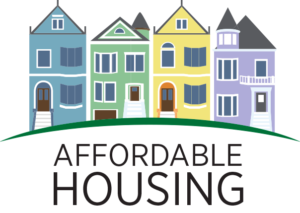Affordable Housing Prevents Homelessness
On any given evening, nearly 554,000 Americans are homeless. This figure includes individuals, families and youth across all parts of the United States. It includes men, women and children of all backgrounds and walks of life. You may know some people who experience or are at risk of homelessness..
The current Housing and Urban Development (HUD) Secretary Ben Carson recently proposed raising rent for low-income Americans that receive federal housing subsidies. These far-reaching changes would triple rent for the poorest households and make it easier for housing authorities to impose work requirements. These changes target housing, food stamps and Medicaid and aim to restrict access to the “safety net” subsidies for some of our most at-risk families and children.
This proposal will almost surely increase the rate of homelessness in our country. It also blatantly disregards the affordable housing crisis currently at hand. Today there’s a deficit of more than 7.2 million affordable rental units for our lowest-income citizens. Many of our neighbors simply have nowhere to go.

It hasn’t always been this way, nor does it have to continue. In 1970, America had a 300,000-unit surplus of affordable rental units. But as the 1970s progressed, we witnessed mental health facilities close at alarming rates, and watched as inexpensive rooming houses were replaced with costly apartments. Almost overnight, homeless individuals began to appear on streets across the country. Today nearly half of all renters can’t afford rent, and over half a million Americans are homeless.
According to The Nation:
“Nationwide, there are just 35 affordable and available rental homes for every 100 extremely low-income families—those who either live in poverty or earn less than 30 percent of the median income in their area. It’s a problem in every major city and in every state. Nationally, nearly half of renters spend more than 30 percent of their income on housing.”
Permanent rent subsidies, which subsidize half or two thirds of market rent and vary with income to allow for fluctuations in the job market, are one measure aimed at preventing homelessness. Federal and local programs, such as the Housing Choice Voucher Program (also know as Section 8) or Neighborhood of Affordable Housing (NOAH) in East Boston, provide additional access to permanent housing and resources to take aim at homelessness. Today’s Section 8 program, while still largely underfunded by Congress, provides people living in poverty with vouchers that can be spent on housing. The stark reality is, however, that there are simply not enough affordable housing units available for those in need. In many parts of the country, landlords can outright reject housing vouchers, and if a voucher recipient can’t find a home within 60 or 90 days, their subsidy is lost. Just one in four families who are eligible for federal rental assistance actually receive it.

